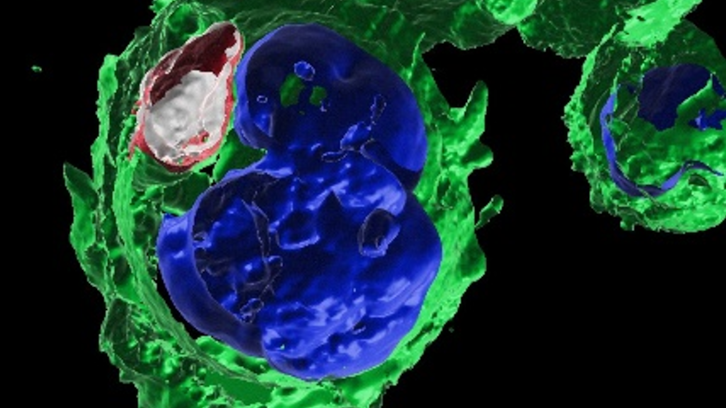Obtaining true-to-life metal-marked nanoplastics from milk bottles

Contamination by plastic waste is a serious environmental problem that will increase in the coming years, but the extent to which it may pose a health risk is unknown. The UAB Mutagenesis Group has, for the first time, obtained and characterised microplastics and metal-labelled nanoplastics from milk bottles, which are more representative of real samples of contaminants present in the environment.
Plastic debris invades all ecosystems, both aquatic and terrestrial, and is a serious environmental problem. Far from decreasing, this situation will continue to increase in the coming years due to the imbalance between the overproduction of plastics and the limited management of plastic waste. One of the key questions being asked by the scientific community, policy makers and the public is whether this pollution can pose a health risk.
Visible plastic debris is only the tip of the iceberg of the problem, as it is constantly degraded by various physico-chemical/biological mechanisms to smaller sizes, giving rise to so-called micro- and nanoplastics (MNPL): fragments measuring 1-1000 microns and 1-1000 nanometres respectively. Thanks to their small size, these fragments can be easily absorbed by organisms (animals and humans).
In this context, the Mutagenesis Group of UAB leads the European project PlasticHeal, which aims to find answers to the many questions about the risks associated with exposure to LLINs.
Although studies on the hazards of MNPLs have increased exponentially in the last three years, most of the work is based on pristine versions (mainly polystyrene), which are not representative of the secondary MNPLs present in the environment as a result of the degradation of plastic elements.
Faced with this challenge, our group developed a method to obtain and stain MNPLs resulting from the laboratory degradation of polyethylene terephthalate (PET) water bottles (Villacorta et al., Journal of Hazardous Materials, 439: 129593, 2022).
PET (gray) and titanium (white) nanoparticle visualized by scanning electron microscopy (left). Internalization in human THP1 monocytic cells: yellow (PET), white dots (titanium) visualized by confocal microscopy (center). Reconstruction of the same treated images where the core is seen in blue, the red represents the PET and the white the titanium (right).
The presence of these PET-MNPLs is difficult to quantify once they have been internalised into cells/organisms. For this reason, we used the above method to degrade opaque PET bottles ( such as milk bottles). As the bottles contain titanium (TiO2NP), the metal is also embedded in the resulting MNPLs. The resulting PET(Ti)*NPLs were extensively characterised from a physicochemical point of view, confirming their nano-range and hybrid composition.
It should be emphasised that this is the first time that such metal-labelled MNPLs have been obtained and characterised. Preliminary studies with the resulting PETO(Ti)*NPLs show that they are easily internalised in different types of human cells without producing any obvious signs of toxicity. The demonstration by confocal microscopy that the resulting NPLs [PETO(Ti)*NPLs] contain Ti samples highlights the multiple advantages of this material, as it can be used in in vivo studies to determine the fate of PETO(Ti)*NPLs after exposure. Indeed, we have already demonstrated this using Drosophila as an in vivo experimental model, quantifying the amount of plastic accumulated inside the larval body. It is also being used in mice to determine which organs accumulate the most MNPLs.
In summary, the use of such metal-labelled MNPLs may facilitate answers to many of the current questions of the scientific community (and the community at large) about the risks associated with exposure to secondary MNPLs present in the environment.
Aliro Villacorta
Department of Genetics and Microbiology
Universitat Autònoma de Barcelona
Arturo Prat University (Iquique, Chile)
Aliro.Villacorta@autonoma.cat

